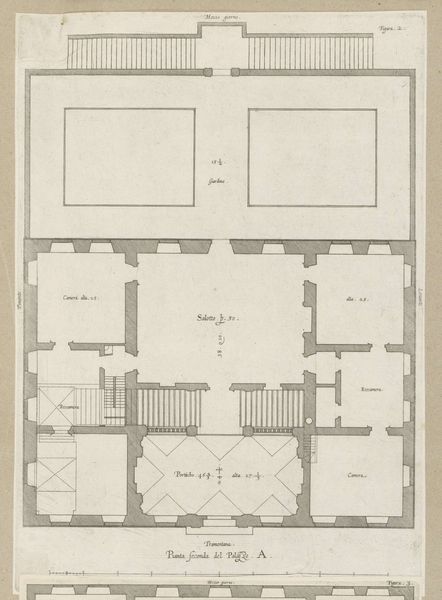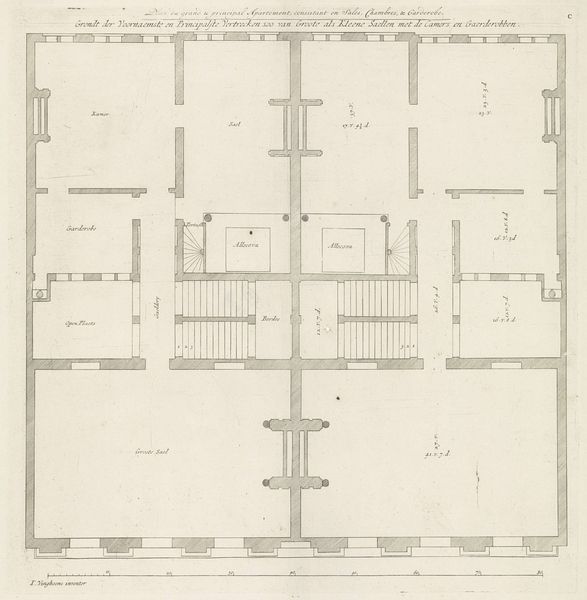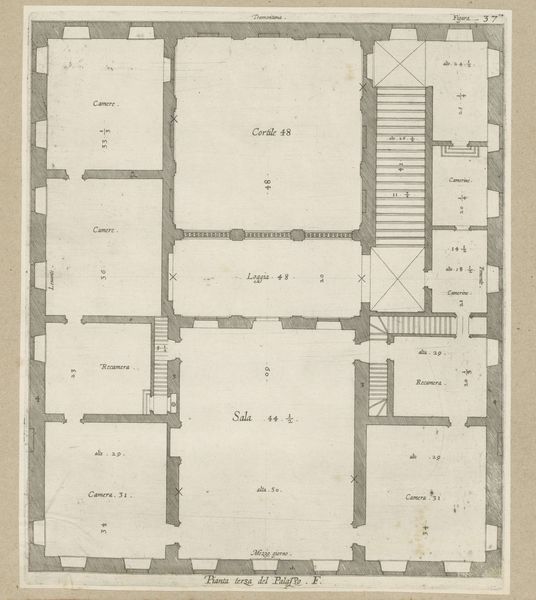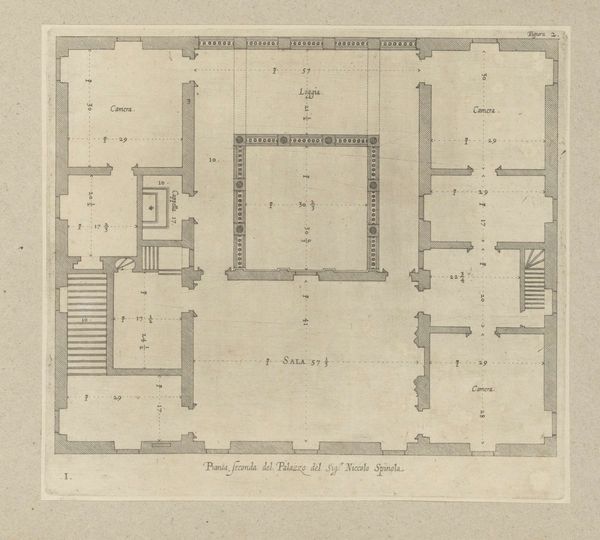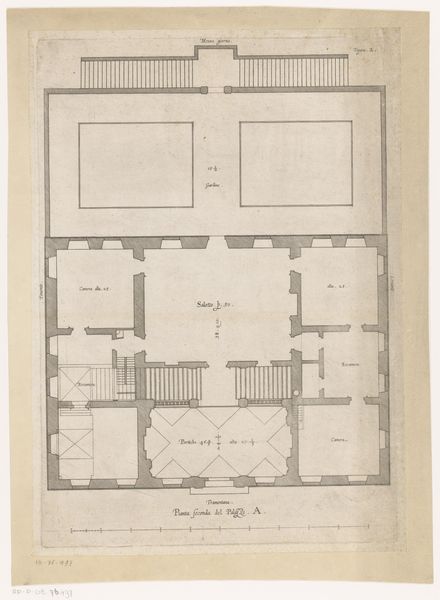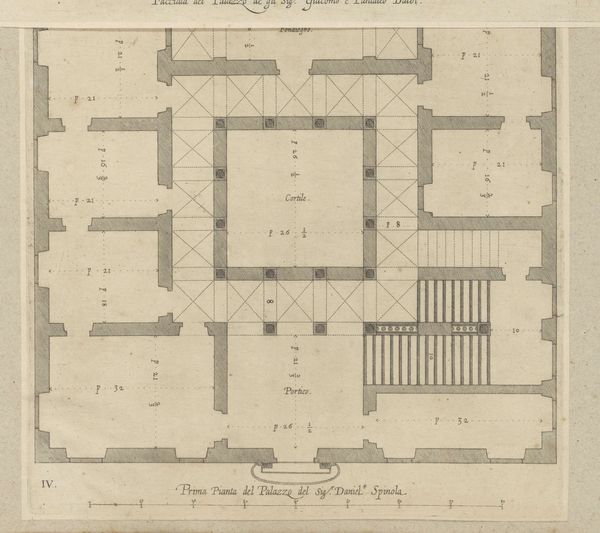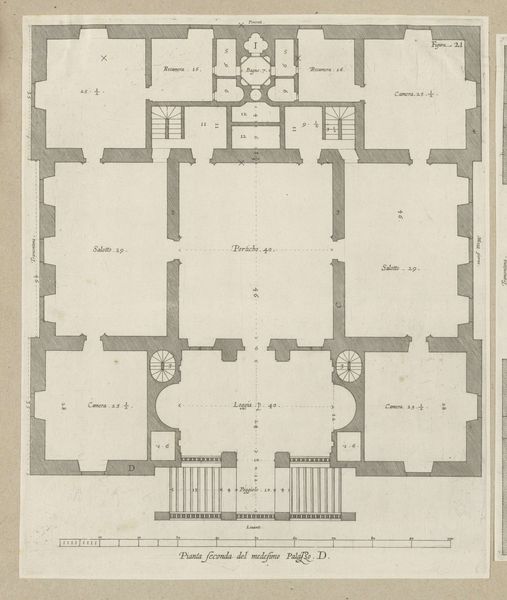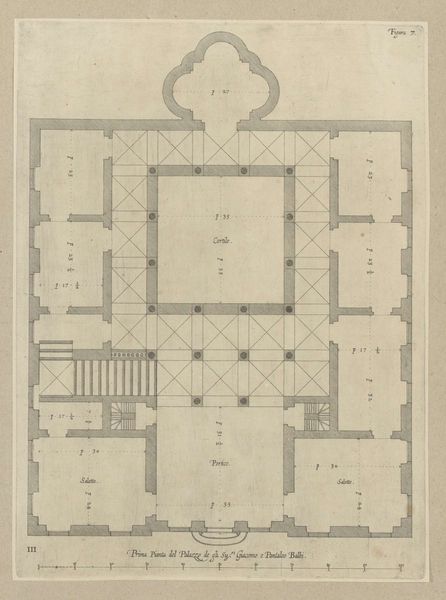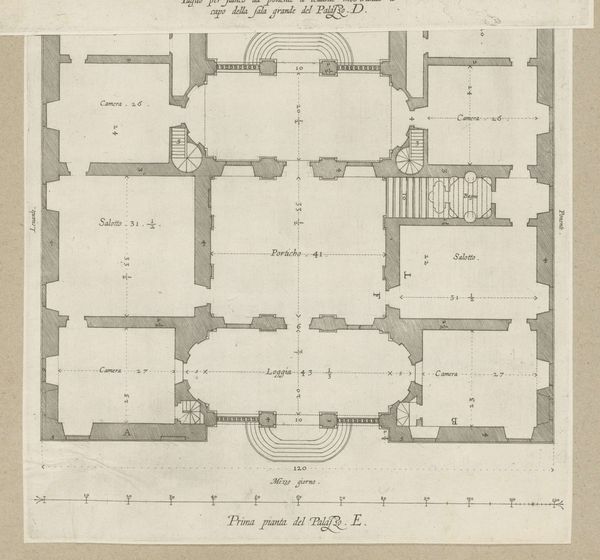
Plattegrond van het souterrain van het Palazzo Spinola te Genua 1622
0:00
0:00
drawing, paper, ink, architecture
#
drawing
#
baroque
#
paper
#
ink
#
geometric
#
cityscape
#
architecture
Dimensions: height 297 mm, width 246 mm, height 583 mm, width 435 mm
Copyright: Rijks Museum: Open Domain
Curator: I’m drawn to this meticulous floor plan—it's called "Plattegrond van het souterrain van het Palazzo Spinola te Genua," created in 1622 by Nicolaes Ryckmans. It's currently held here at the Rijksmuseum. Look at this use of ink on paper; what feelings arise for you? Editor: It's...starkly geometrical, isn't it? A ghost of a building, or perhaps a frozen memory. I feel the chill of marble floors and the faint echo of footsteps, despite it only being lines and text. It gives me an intriguing feeling of stillness. Curator: Interesting! For me, it evokes the ambitions of Baroque-era Genoese aristocracy. Ryckmans wasn's simply rendering the physical space but mapping out power. Each room, so precisely rendered, speaks of hierarchy and controlled movement. Look how the scale suggests that light wasn't of major concern; subterranean architecture relies on function over airy openness, more so than splendor and ornamentation. Editor: So, less about *seeing* and more about *controlling* the space? This wasn’t designed for casual promenades! There's something subtly unsettling about the lack of detail; it makes the whole thing seem almost clinical, like an architect's detached blueprint for an intricate anthill. How does a drawing like this speak to us about the society it emerged from? Curator: The absence of people is certainly telling. It strips away the facade, leaving only the bones of power. These floor plans were circulated and preserved as potent reminders of status and dominion; control over even the hidden spaces solidified your place within a culture of elaborate social theater. These clean lines would serve as aspirational representations of stability, influence, and grandeur that shaped not only spaces but how one lived inside them, how relationships operated and developed! Editor: Almost like a script for daily life! This seemingly simple architectural drawing morphs into a social document with an intensity you wouldn't initially assume based only on its muted aesthetic. It's far more evocative, and chilling, than any grand portrait hanging in the "Stalla" spaces that Ryckmans sketched centuries ago. Curator: Yes! A frozen but vibrant song of a place; and how we move and breathe through it and with it, too!
Comments
No comments
Be the first to comment and join the conversation on the ultimate creative platform.
